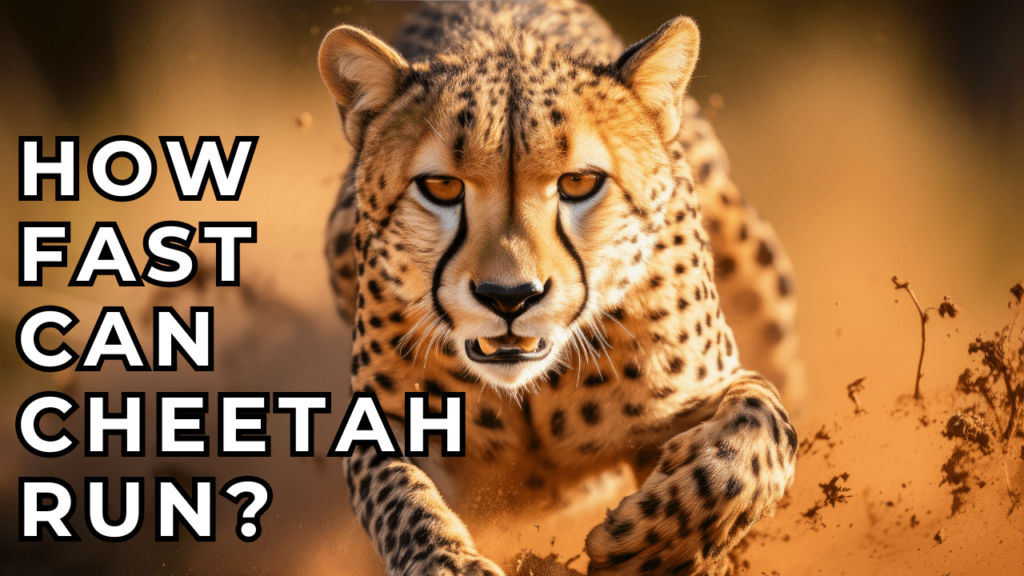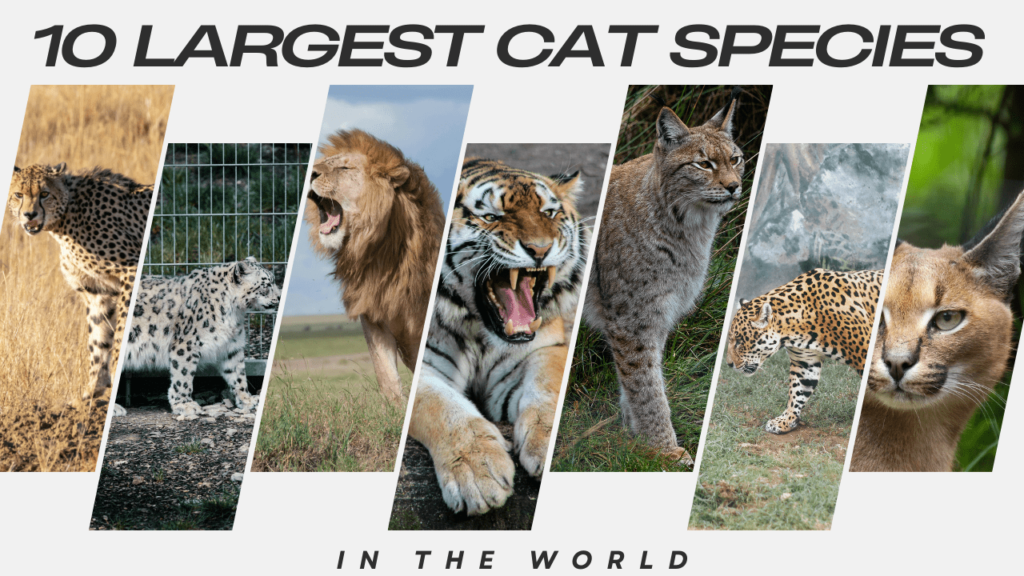The Secrets Behind Nature’s Fastest Runner
1. Introduction:
Cheetahs are known as the fastest runners in the animal kingdom, but just how fast can a cheetah run? With their lean bodies, powerful muscles, and unique adaptations, cheetahs can reach staggering speeds, leaving many to wonder what makes these big cats such incredible sprinters. In this article, we’ll explore the secrets behind the cheetah’s speed and uncover the biological marvels that allow them to dominate the African savannah with their unparalleled agility.
From the mechanics of cheetah running to the impressive records of their top speed, you’ll discover everything there is to know about these remarkable creatures. Whether you’re curious about how cheetahs achieve their bursts of speed or looking to understand how long they can maintain it, we’re about to dive deep into the world of nature’s fastest runner. Prepare to be amazed by the sheer power, precision, and speed of cheetahs as we uncover the answer to the question: How fast does a cheetah run?
Even though Cheetah is the Fastest Land Animal, it comes at #7 in the List of Fastest Animals in the World.
Cheetah information table:
| Common Name | Cheetah |
| Scientific Name | Acinonyx jubatus |
| Family Name | Felidae |
| Type | Mammal |
| Size | Head and body length: 112-150 cm (44-59 in), Tail length: 60-80 cm (24-31 in) |
| Weight | 21-72 kg (46-159 lbs) |
| Size Relative to a 6-Ft Human | Roughly half the height of a human when standing on all fours |
| Diet | Carnivorous (primarily gazelles, impalas, and other small to medium-sized ungulates) |
| Average Lifespan in the Wild | 10-12 years |
| Habitat | Grasslands, savannas, and open plains |
| Group Name | Coalition (for males), Solitary (for females) |
| Found In | Sub-Saharan Africa, with a small population in Iran |
| Conservation Status | Vulnerable (IUCN Red List) |
2. The Anatomy of Speed: How Cheetahs Are Built to Run Fast
To understand just how fast can a cheetah run, it’s essential to delve into the unique anatomical features that enable their remarkable velocity. Cheetahs are not just fast; they are biologically designed for speed. Here’s a closer look at the specialized features that make cheetah speed truly extraordinary.
2.1 Specialized Body Structure
Lightweight Body
One of the most critical aspects behind impressive speed of cheetah is its lightweight body structure. Unlike many other large predators, cheetahs have slim, aerodynamic bodies that significantly reduce air resistance. This streamlined design allows them to move swiftly and efficiently, minimizing drag and maximizing their running potential.
Cheetah comes at No. 8 in the List of Top 10 Largest Cat Species in the World
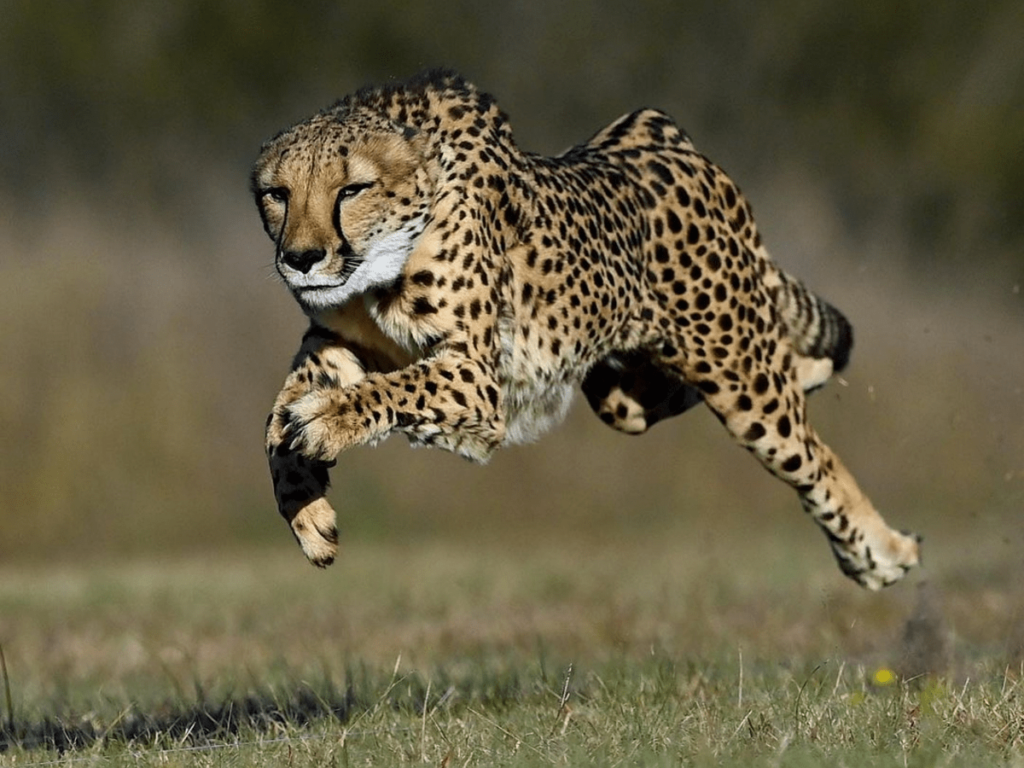
Flexible Spine
Another key feature is their highly flexible spine. This flexibility enables cheetahs to extend their bodies more than most animals during each stride. The increased stride length is crucial for achieving the extraordinary cheetah top speed. Each time a cheetah runs, its spine stretches and contracts in a way that allows for a longer, more powerful stride, contributing to their incredible acceleration and speed.
2.2 Powerful Muscles
Muscle Composition
The role of muscle composition in the speed of cheetah cannot be overstated. Cheetahs possess a high percentage of fast-twitch muscle fibers, which are essential for explosive, short bursts of speed. These muscle fibers contract quickly and powerfully, enabling cheetahs to accelerate rapidly and reach speeds that few other animals can match.
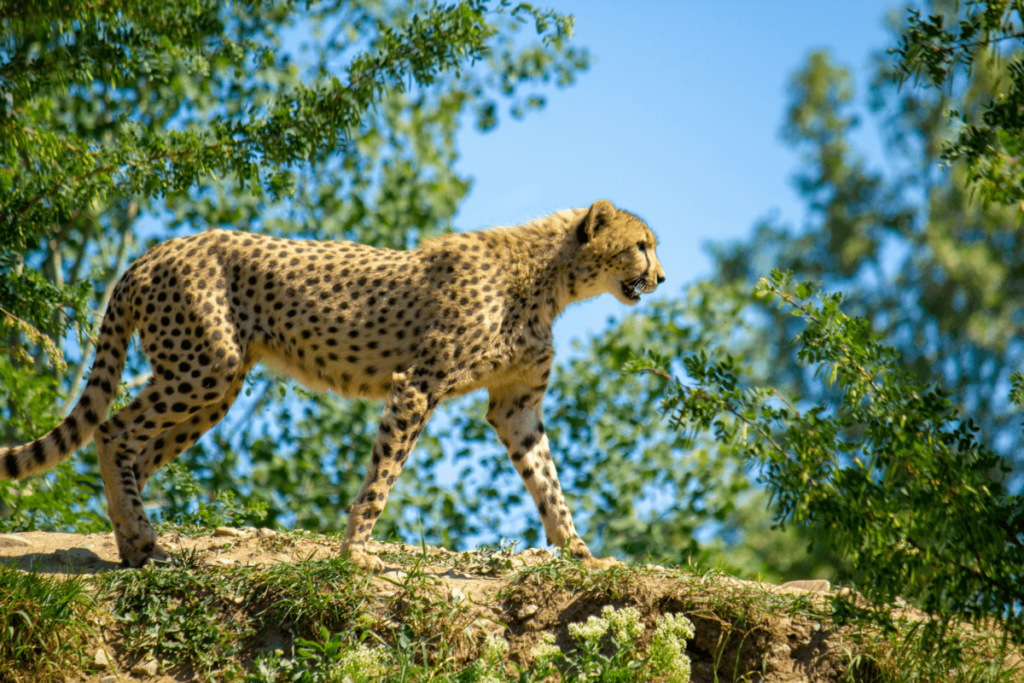
Leg Strength
Cheetahs’ powerful hind legs are another crucial factor in their ability to run fast. These strong, muscular legs provide the necessary force for rapid acceleration and maintain high speeds during chases. The strength and structure of their legs play a significant role in cheetah running ability, allowing them to cover ground swiftly and efficiently.
2.3 Long Legs and Tail
Leg Length
The long legs of a cheetah are perfectly adapted for high-speed running. Longer legs mean that cheetahs can cover more ground with each stride, which is essential for maintaining their high velocities. This length allows them to achieve their top speeds and sustain them over short distances.
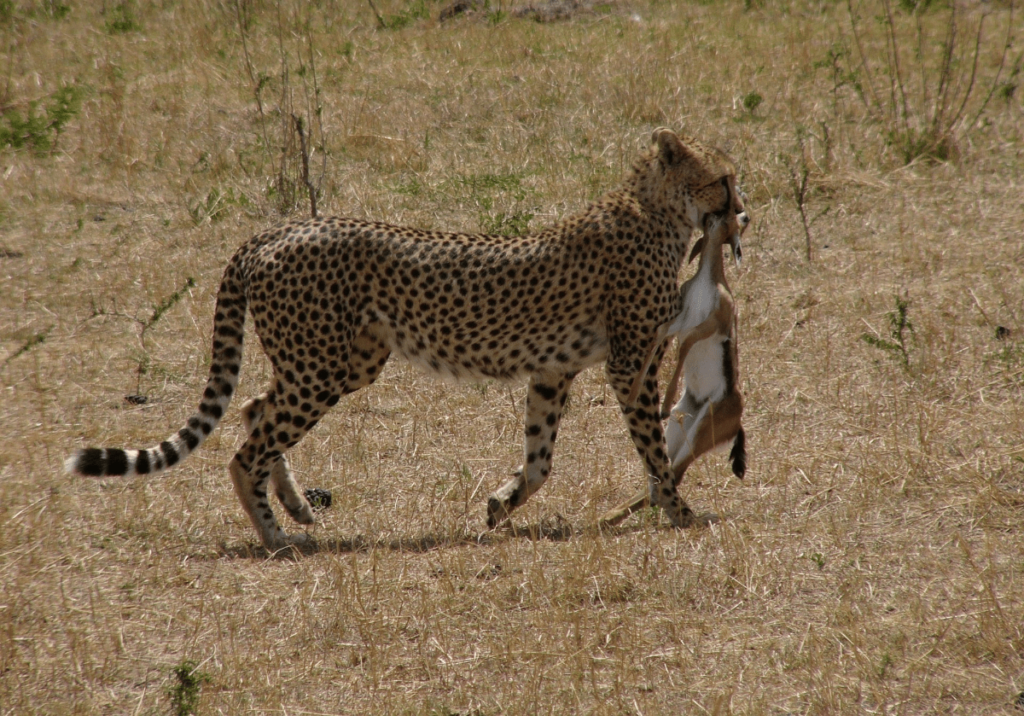
Balancing Tail
Finally, the cheetah’s tail acts as a dynamic balancing tool. During high-speed chases, the tail functions like a rudder, helping the cheetah maintain stability and direction. This balancing mechanism is vital for maneuvering at such high speeds and ensures that they can navigate sharp turns and sudden changes in direction without losing their pace.
3. How Fast Can a Cheetah Run?
Understanding the cheetah’s top speed is crucial to appreciating why they are often described as the fastest land animals. From their record-breaking acceleration to their speed limits, let’s explore just how fast can a cheetah run.
3.1 Maximum Speed
Top Recorded Speed
When it comes to speed, cheetahs are in a league of their own. The maximum speed a cheetah can reach is between 60 to 70 mph (95-115 Kms), making them unparalleled in the animal kingdom. This remarkable cheetah top speed allows them to outrun almost any prey, cementing their reputation as the fastest land animal on Earth.

Speed Comparison
Lets see how fast does a cheetah run compared to other fast animals. For instance, the pronghorn antelope, which is often considered one of the fastest animals in North America, can reach speeds of around 55 mph (89 km/h). In comparison, the peregrine falcon, the fastest bird, can dive at speeds exceeding 200 mph (322 km/h). However, in level flight, its speed is not as impressive as the cheetah’s sprinting capabilities. Despite these comparisons, the speed of cheetah during a sprint remains unrivaled among terrestrial animals.
3.2 Acceleration Power
Quick Burst of Speed
One of the most impressive aspects of a cheetah’s speed is its ability to accelerate rapidly. A cheetah can go from 0 to 60 mph in just a few seconds. This incredible acceleration is due to their specialized muscle fibers and lightweight body structure, which together contribute to cheetah running ability. This rapid burst of speed is crucial for catching fast-moving prey.

Acceleration vs. Endurance
While cheetahs excel in acceleration and short bursts of speed, they are not built for endurance. Unlike marathon runners, cheetahs are sprinters. Their body is designed for speed rather than sustained running, which is why they can maintain such high speeds only for a brief period. This limitation is a trade-off for their impressive acceleration capabilities, making them superb at short, high-speed chases but less suited for long-distance pursuits.
3.3 Time and Distance Limits
Short Distance Sprinter
Despite their incredible speed, cheetahs can only sustain their top velocity for a short distance. They can maintain their maximum speed for about 20 to 30 seconds, covering a distance of roughly 0.30 miles (500 meters). Beyond this short burst, their bodies begin to overheat, and they must slow down. This limitation is due to the intense energy expenditure and heat generated during such high-speed chases. Therefore, while Cheetah’s Speed seem extraordinary, it is not sustainable over long distances.
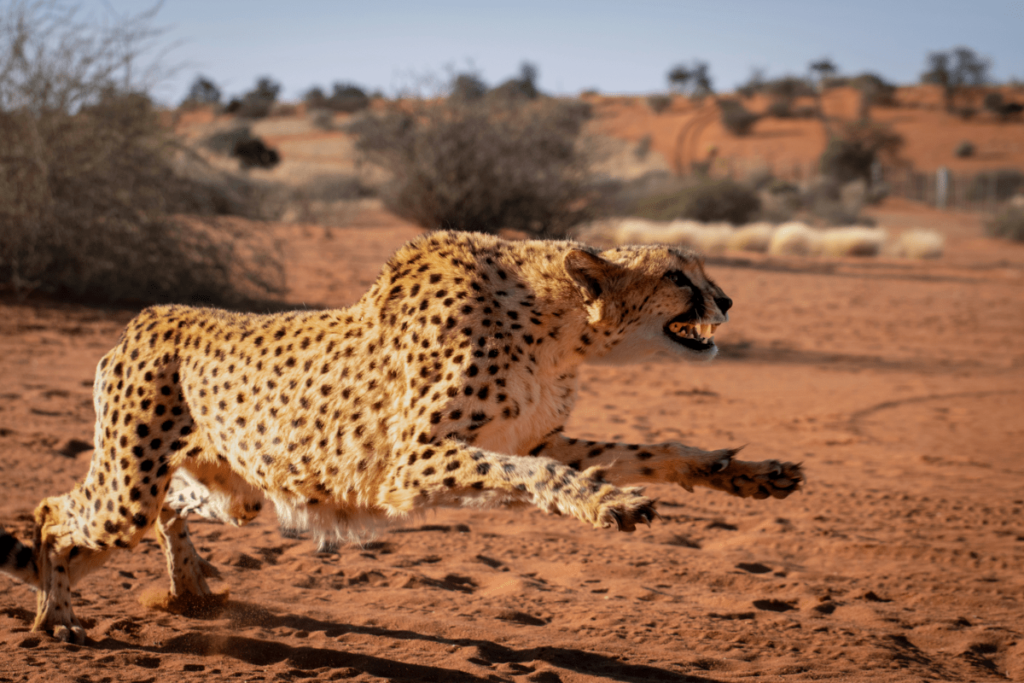
4. The Science Behind Cheetah Speed
Understanding the cheetah’s speed requires a dive into the science behind their remarkable ability to run fast. From aerodynamics to energy efficiency, various factors contribute to their status as nature’s fastest runner.
4.1 Aerodynamics
Streamlined Body
One of the key factors in the cheetah’s impressive speed is its streamlined body structure. The cheetah’s slim, aerodynamic form significantly reduces drag, allowing them to cut through the air with minimal resistance. This design is crucial for maintaining high velocities during a sprint. The cheetah’s body is built for speed, ensuring that every component—from its head to its tail—contributes to overall cheetah speed.
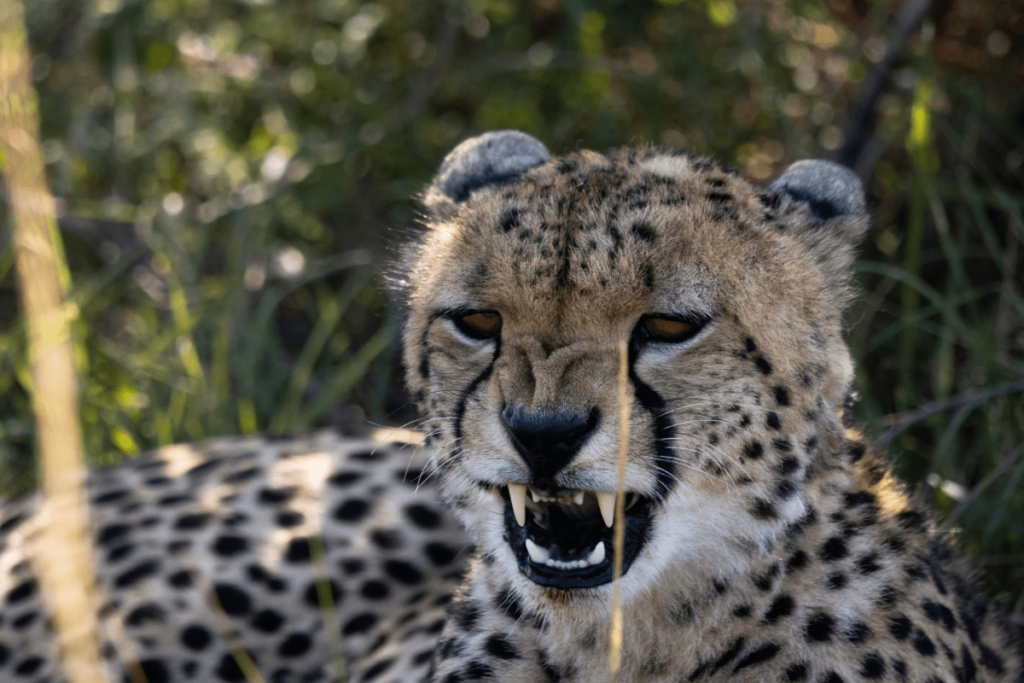
Nostril and Lung Efficiency
Another critical aspect of their speed is their efficient respiratory system. Cheetahs have large nasal passages and lungs, which enable them to take in and utilize more oxygen during high-speed chases. This efficiency is essential for sustaining their incredible cheetah top speed and supports their ability to perform short bursts of high-speed running without quickly becoming winded. Enhanced oxygen intake helps them maintain cheetah running capabilities throughout the sprint.
4.2 Energy Efficiency
Conserving Energy
Cheetahs are not just fast; they are also energy-efficient when it comes to sprinting. Their bodies are designed to conserve energy for that crucial final burst of speed needed during hunts. The ability to store and release energy effectively allows them to reach and sustain their maximum velocity when it matters most. This energy conservation is a vital aspect of their overall strategy.
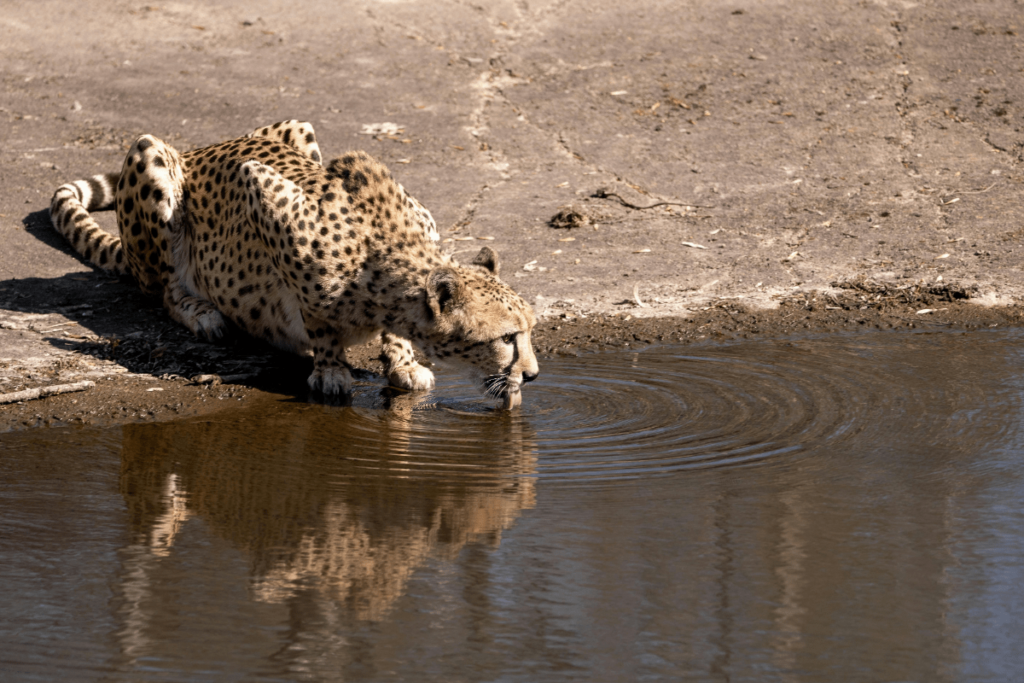
Recovery Time
Despite their incredible speed, cheetahs cannot maintain their top performance for extended periods. After a high-speed chase, they require significant recovery time—usually around 30 minutes—to rest and cool down. This recovery period is essential for replenishing their energy stores and lowering their body temperature, which rises sharply during intense sprints. The need for such a long rest underscores the immense physical strain of reaching Cheetah’s speed limits and highlights the trade-off between speed and endurance in their biological design.
5. The Role of Speed in Hunting and Survival
The cheetah’s extraordinary speed is not just a remarkable trait; it plays a critical role in their hunting strategies and overall survival in the wild. From stealthy approaches to high-speed chases, the cheetah’s agility is key to its existence.
5.1 Hunting Tactics
Stealth Approach
Before they engage in a high-speed chase, cheetahs employ a stealthy approach to get as close as possible to their prey. This initial phase is crucial for setting up the chase and positioning themselves strategically. By staying low and blending into their environment, cheetahs can avoid detection, which allows them to initiate a sprint with a higher success rate. This stealthy approach maximizes the chances of utilizing cheetah speed effectively when the time comes to burst into action.
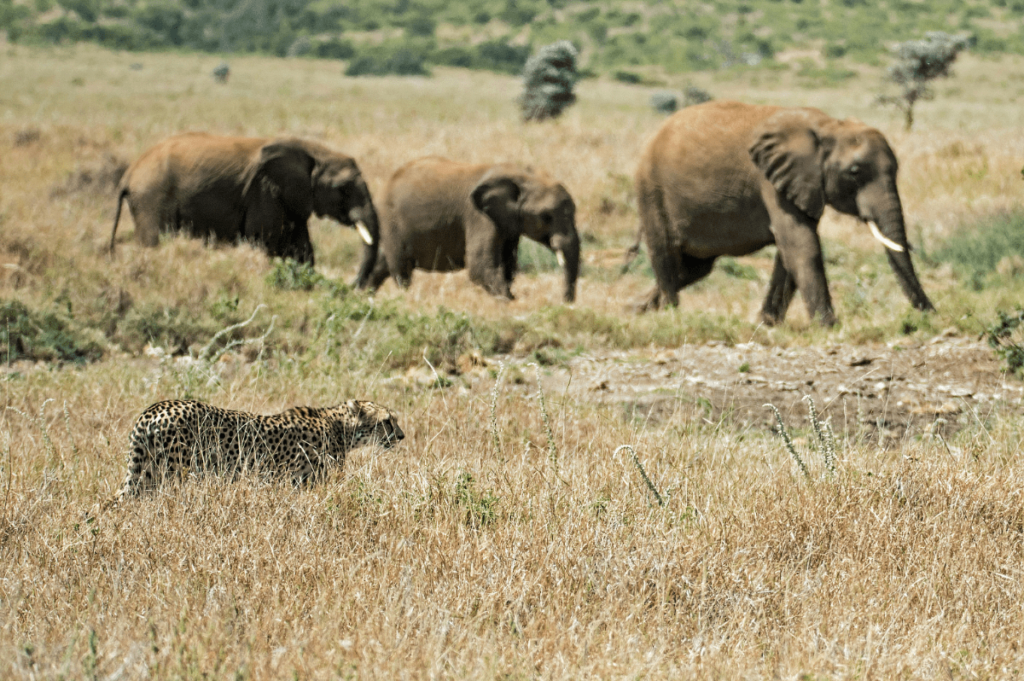
Speed in Action
Once the chase begins, the cheetah’s running capabilities come into play. Their sprint can reach speeds of 60-70 mph, enabling them to outpace even the most agile animals, such as gazelles. This burst of speed is essential for catching prey that relies on quick reflexes and high-speed evasion tactics. The cheetah’s ability to accelerate rapidly and maintain high velocities ensures they can close the gap between themselves and their target, demonstrating the true power of cheetah top speed.
5.2 Competition with Other Predators
Challenges
Cheetahs face significant competition from other predators in their habitat, such as lions and hyenas, which may pose a threat to their survival. In these encounters, the cheetah’s reliance on speed becomes even more evident. While other predators may have strength and endurance on their side, the cheetah’s speed is its primary asset. Their ability to outrun rivals and escape danger highlights the crucial role of cheetah’s speed in their survival strategy.

Speed vs. Strength
Unlike some of their competitors that rely on brute strength, cheetahs depend on their speed to secure their place in the food chain. This distinction is important because it underscores the specialized evolutionary adaptations that make the cheetah unique. While strength is essential for some predators, the cheetah’s survival strategy revolves around its unparalleled ability to sprint at high speeds, making speed of cheetah a fundamental aspect of their hunting and defensive tactics.
6. Factors That Limit a Cheetah’s Speed
While cheetahs are celebrated for their remarkable speed, several factors can limit their ability to sustain their incredible velocity. Understanding these limitations provides a more comprehensive view of what influences cheetah’s performance.
6.1 Physical Fatigue
Overheating
One of the primary factors that restrict a cheetah’s speed is the risk of overheating. During high-speed chases, the cheetah’s body generates significant heat due to the intense physical exertion. Their sleek, streamlined body aids in reducing drag, but it also means that heat builds up quickly. To avoid overheating, cheetahs can only maintain their top speed for a short duration—typically around 20-30 seconds. This limitation is a direct consequence of their body’s rapid heat production during these sprints, affecting how long cheetah top speed is sustained.
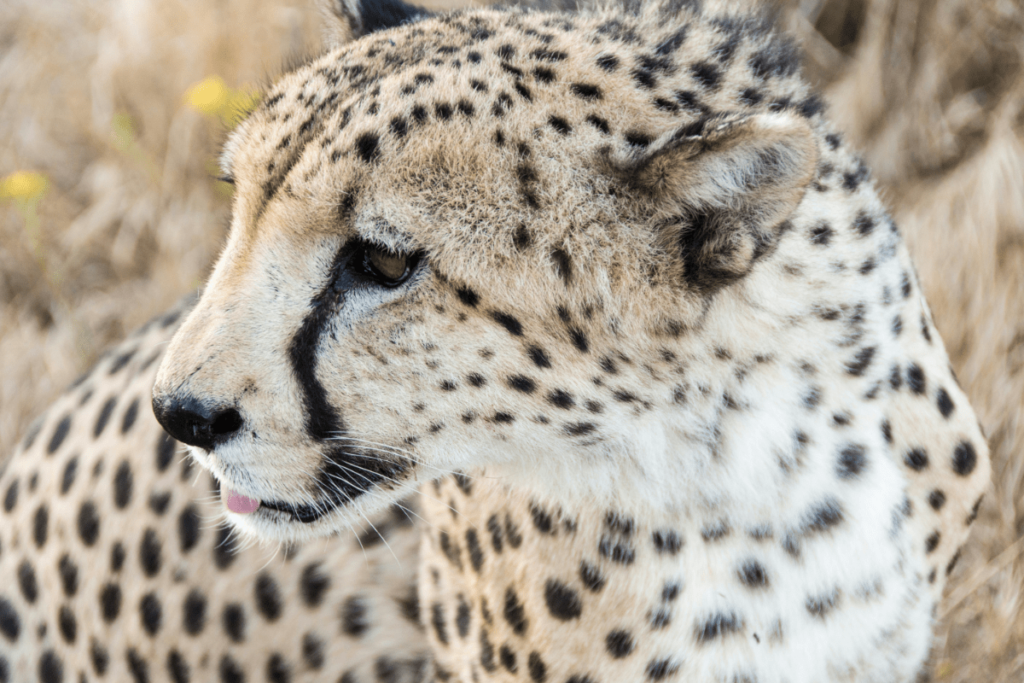
Energy Drain
Fast sprints are not just physically demanding; they are also energy-draining. The energy reserves of a cheetah deplete rapidly during a high-speed chase. Their muscle fibers, particularly fast-twitch ones, provide the necessary burst of power, but this energy is quickly consumed. After a sprint, cheetahs need to rest and recover for a significant period—often up to 30 minutes—to replenish their energy and cool down. This energy drain limits their ability to perform multiple high-speed chases in quick succession and affects their overall running performance.
6.2 Environmental Factors
Terrain Impact
The type of terrain can significantly impact a cheetah’s speed. On open savannas, where the ground is relatively flat and unobstructed, cheetahs can achieve their top speeds more easily. However, in more rugged or uneven terrains, such as forests or rocky landscapes, their ability to reach and maintain high velocities is hindered. The varying terrain affects the speed of cheetah by introducing obstacles and changing the surface over which they run, thereby limiting their sprinting effectiveness.
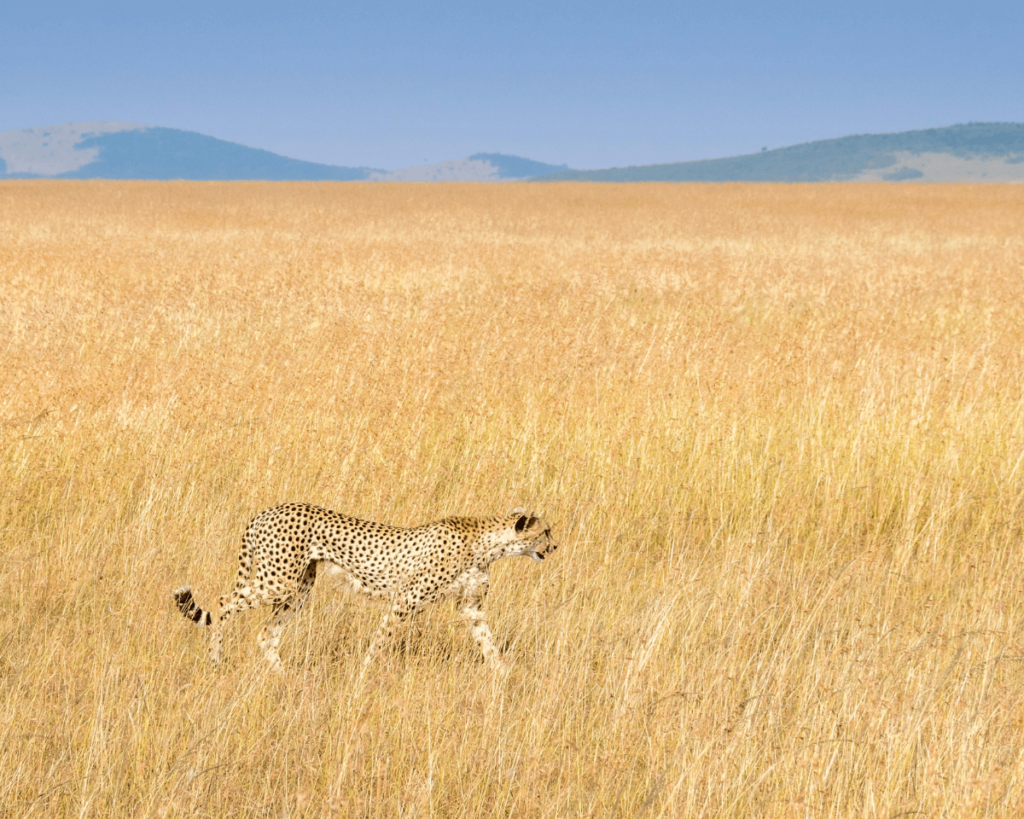
Prey Behavior
Another factor influencing a cheetah’s speed is the behavior of their prey. Agile and evasive prey can make it more challenging for cheetahs to close the distance quickly. If the prey exhibits unpredictable movements or changes direction rapidly, it forces the cheetah to adjust its speed and trajectory, potentially affecting cheetah speed. The dynamic nature of prey behavior can sometimes lead to failed hunts or reduced sprint efficiency.
7. Cheetahs in the Wild vs. Captivity: Does Environment Impact Their Speed?
Cheetahs are renowned for their remarkable speed, but does the environment affect how fast can a cheetah run? The comparison between cheetahs in the wild and those in captivity reveals interesting insights into how the surroundings influence speed of cheetah.
7.1 Cheetah Speed in the Wild
Natural Habitat
In their natural habitat—open plains and grasslands—cheetahs are perfectly adapted for high-speed running. These expansive environments provide the ideal conditions for them to reach their maximum velocity. The flat and unobstructed terrain allows cheetahs to utilize their incredible top speed effectively, covering large distances in pursuit of prey. The open spaces also enable them to build up the necessary momentum for their impressive sprinting capabilities. Their speed is an evolutionary advantage in these environments, facilitating both hunting and escape from larger predators.
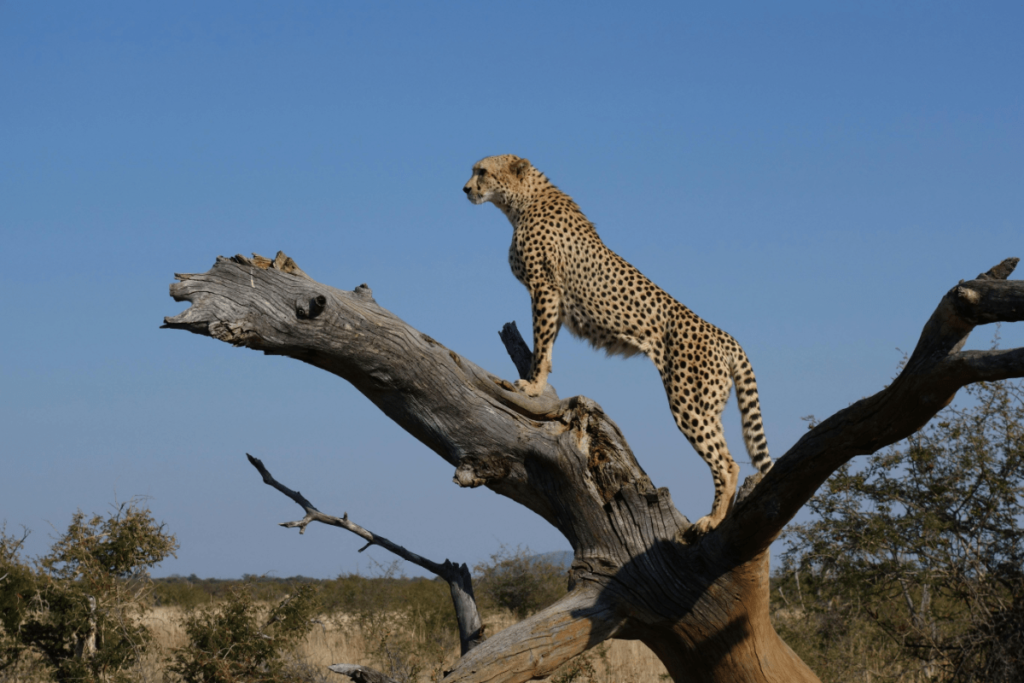
7.2 Speed in Captivity
Captive Cheetahs
When cheetahs are placed in captivity, such as in zoos, their ability to achieve the same high speeds as in the wild can be affected. Enclosures are often smaller and may not provide the long, uninterrupted stretches needed for cheetahs to reach their full potential. While captive cheetahs are still capable of impressive sprints, their maximum speed is often less than that of their wild counterparts due to the constrained space and lack of natural stimuli.
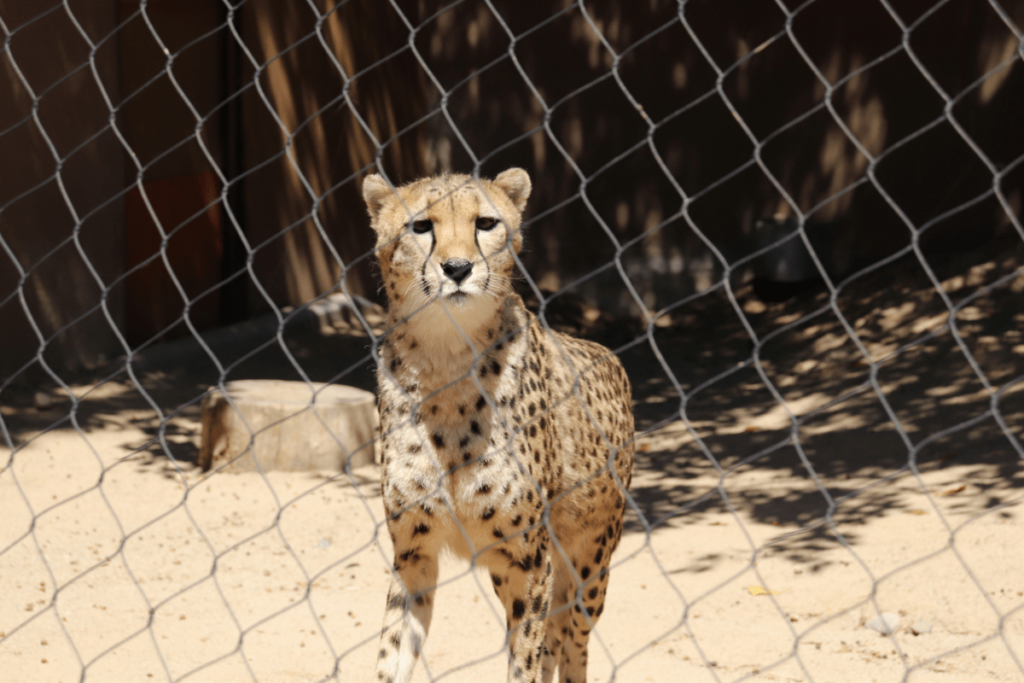
Training and Enrichment
To mitigate these limitations, many zoos engage cheetahs in training and enrichment activities designed to simulate their natural behavior. These activities include running exercises, such as lure courses, where cheetahs chase a mechanical lure. Such enrichment helps maintain their physical fitness and provides mental stimulation, encouraging them to run and behave in ways similar to their wild counterparts. Despite these efforts, the confined spaces and altered routines in captivity generally result in differences in cheetah running performance compared to their wild relatives.
Also, check out Why Is the Lion the King of the Jungle?
8. Conservation Challenges and the Future of Cheetah Speed
As cheetahs race across the plains with unparalleled speed, their future is increasingly at risk due to various conservation challenges. The impact of human activities on their habitats and the ongoing efforts to ensure their survival are crucial for preserving their legendary skill.
8.1 Impact of Habitat Loss
Declining Numbers
Habitat loss is a major threat to cheetahs, significantly affecting their ability to run at high speeds. As human activities encroach upon their natural environments, such as through deforestation and urban development, the vast open spaces required for their incredible speed shrinking. Habitat fragmentation not only limits their running grounds but also isolates populations, making it harder for cheetahs to find mates and maintain genetic diversity. This loss of habitat disrupts their hunting patterns and can lead to decreased physical fitness, as they have less opportunity to engage in natural high-speed chases. If cheetah’s lose their natural habitat How fast can a cheetah run on a new terrain? Not as fast as they used to.
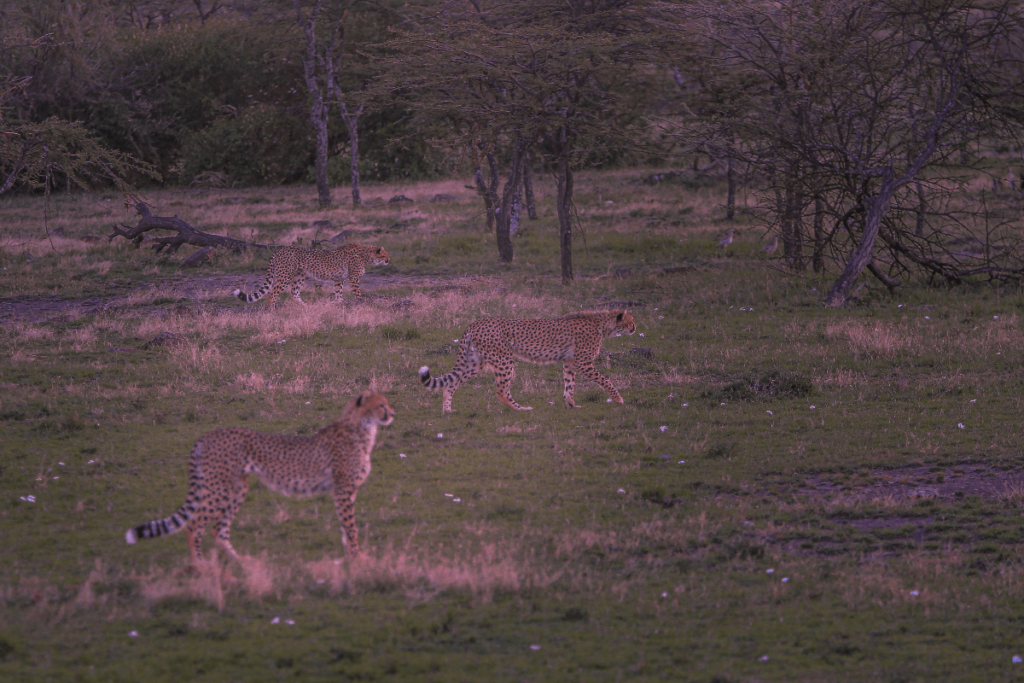
8.2 Conservation Efforts
Organizations Involved
Conservation efforts are essential for addressing these challenges and ensuring that cheetahs continue to thrive in the wild. Various organizations are actively involved in protecting cheetahs and their habitats. Groups like the Cheetah Conservation Fund (CCF) and the Wildlife Conservation Network (WCN) work tirelessly to combat habitat loss, mitigate human-wildlife conflict, and promote sustainable land use practices. These efforts are vital for maintaining the speed of cheetah and overall survival.
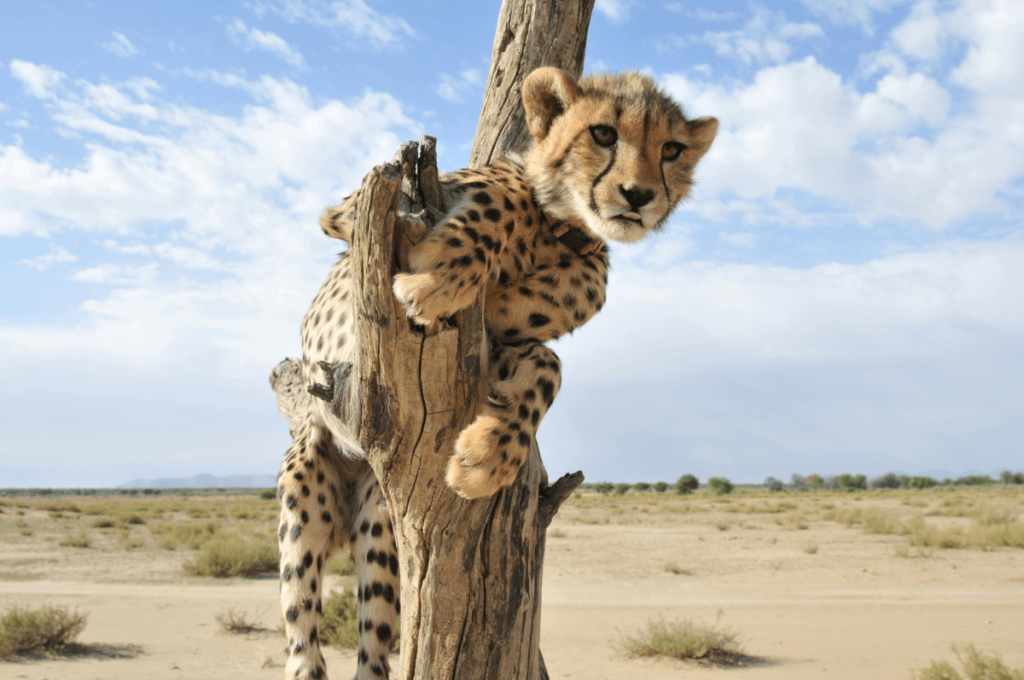
Preserving Their Speed and Abilities
Conservation programs focus on preserving large, connected areas of natural habitat that allow cheetahs to engage in their natural behaviors, including their impressive sprints. By securing these habitats and implementing measures to reduce human impact, these organizations aim to ensure that cheetahs can continue to showcase their remarkable top speed and maintain their role as the fastest land animals on Earth.
9. Fun Facts About Cheetah Speed
Cheetahs are not only remarkable for their speed but also for the fascinating ways their incredible velocity has captured human imagination and inspired innovation. Here are some fun facts about cheetah speed that highlight their record-breaking feats and cultural impact.
9.1 Record-Breaking Runs
Fastest Recorded Speeds
Cheetahs hold the title for the fastest land animals, reaching top speeds of 60 to 70 mph (97 to 113 km/h). One notable record involves a cheetah named Sarah, who, in 1957, was clocked running at an astounding speed of 70.2 mph (113 km/h) during a sprint at the Cincinnati Zoo. This remarkable feat showcases just how fast can a cheetah run and push the limits of speed. Their ability to accelerate from 0 to 60 mph (0 to 97 km/h) in just a few seconds is truly unmatched, making their high-speed chases a marvel of nature.
9.2 Cheetah Speed in Pop Culture
Inspiration for Design
The cheetah’s impressive speed has inspired various athletic and technological innovations. For instance, the design of high-performance sports cars and running shoes often draws from the cheetah’s streamlined body and fast acceleration. In the world of technology, engineers have looked at the cheetah’s speed to develop more efficient, aerodynamically optimized vehicles. The cheetah’s ability to maintain such incredible speed has also influenced the design of equipment aimed at enhancing human performance and agility.
Cheetahs continue to inspire not only through their real-life speed but also through their influence on our creations and innovations, reflecting their status as the fastest runners in the animal kingdom.
Frequently Asked Questions:
How long can a cheetah sustain its top speed?
A cheetah can maintain its top speed of 60 to 70 mph (97 to 113 km/h) for only about 20 to 30 seconds. This high-speed burst is typically enough to catch prey during a chase, but they are unable to sustain this pace for long due to rapid overheating and energy depletion.
Why are cheetahs faster than other big cats?
Cheetahs are faster than other big cats due to their unique anatomical features. Their lightweight body, flexible spine, and long, powerful legs contribute to their incredible speed. Additionally, cheetahs have specialized fast-twitch muscle fibers that provide explosive acceleration, making them the fastest land animals.
Can a cheetah outrun a car?
While a cheetah’s top speed can reach 60 to 70 mph (97 to 113 km/h), this is only for short bursts. Many cars can reach or exceed these speeds, especially on highways. Therefore, a cheetah cannot maintain a high speed long enough to outrun a car, but it can certainly accelerate faster over short distances.
How Fast Does a cheetah Run Compared to a Greyhound?
Cheetahs are faster than greyhounds. While a greyhound can reach speeds of up to 45 mph (72 km/h), cheetahs can run at 60 to 70 mph (97 to 113 km/h). The cheetah’s superior speed is due to its specialized adaptations for sprinting, whereas greyhounds are built for endurance and steady running.
Do cheetahs ever lose speed with age?
Yes, like many animals, cheetahs can lose speed as they age. Older cheetahs may experience a decrease in muscle strength, flexibility, and overall physical condition, which can affect their sprinting abilities. Younger cheetahs typically exhibit the peak of their speed and agility.
Is Usain Bolt faster than a Cheetah?
No, Usain Bolt is not faster than a cheetah. Cheetahs can reach speeds of up to 60-70 mph (97-113 km/h) in short bursts, while Usain Bolt’s top speed is around 27 mph (43 km/h).
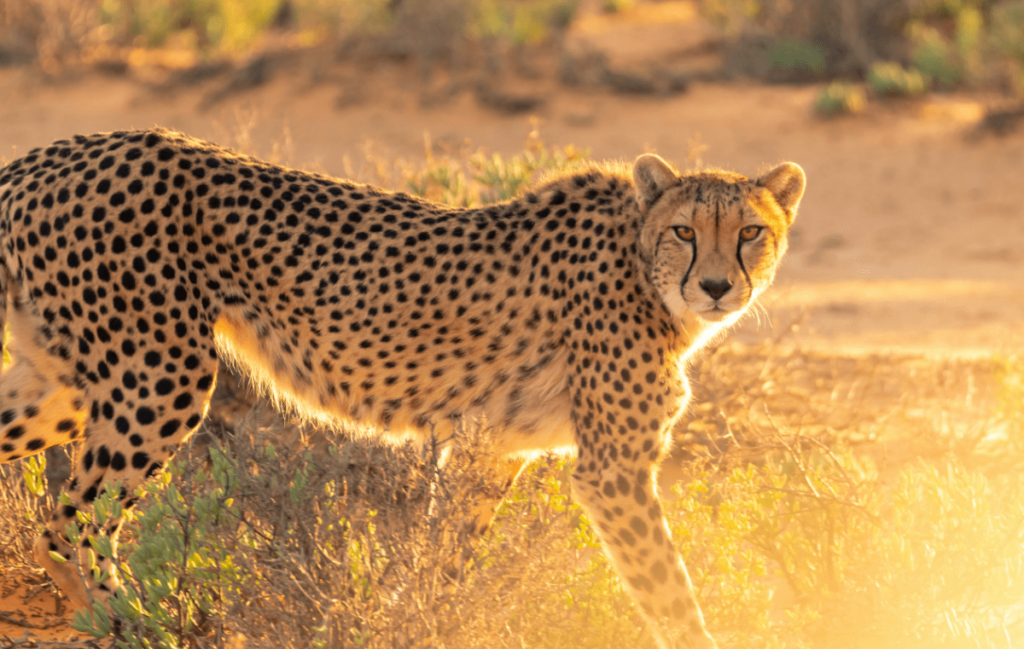
Conclusion
In exploring the astonishing speed of the cheetah, we’ve uncovered a marvel of nature’s engineering. From their specialized body structure, including a lightweight frame and flexible spine, to their powerful muscles and uniquely long legs, cheetahs are perfectly built for high-speed running. The cheetah top speed of 60 to 70 mph (97 to 113 km/h) is not just impressive but a testament to their evolutionary adaptation as the fastest land animals.
We’ve also learned that cheetahs can accelerate from 0 to 60 mph in just a few seconds and sustain their top speed only for short bursts of about 500 meters. Their incredible cheetah speed is essential for their hunting strategy, allowing them to chase and catch swift prey like gazelles. However, various factors, such as physical fatigue and environmental challenges, can limit their speed, and conservation efforts are crucial to preserving their natural habitat and their running capability.
The cheetah’s speed is a true marvel, embodying both the beauty and power of nature’s design. As we continue to marvel at their incredible running abilities, it’s important to support efforts to protect these magnificent creatures and their habitats.
This article not only teaches you How fast can a cheetah run, but also the secrets behind its unbeatable skill.
If you found this exploration into the speed of cheetahs fascinating, please share this article with others who might enjoy learning about these incredible animals. Leave your comments below and join the conversation about how we can all contribute to wildlife conservation. Your support can make a difference in preserving the cheetah’s legacy for generations to come.
